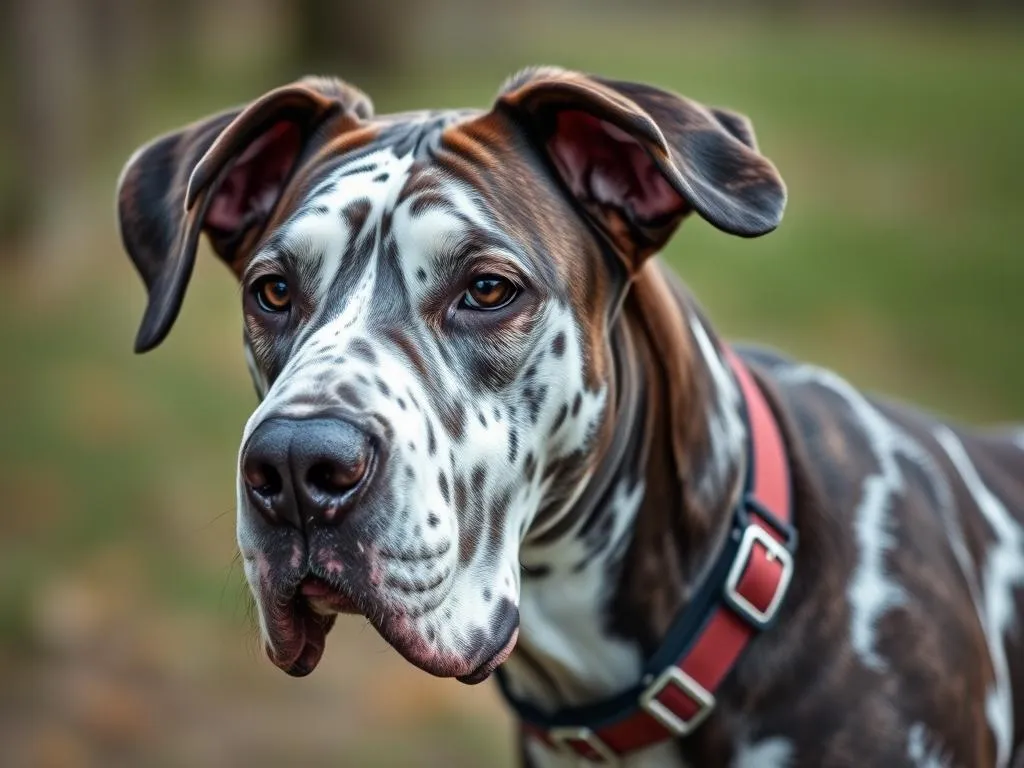
Introduction
Service dogs are trained canines that perform specific tasks to assist individuals with disabilities. According to the Americans with Disabilities Act (ADA), a service dog is defined as a dog that has been individually trained to perform tasks for a person with a disability. This definition excludes emotional support animals (ESAs), therapy dogs, and other types of assistance animals.
Service dogs come in various types, each trained to address specific needs. From guide dogs for the visually impaired to psychiatric service dogs supporting individuals with mental health conditions, these dogs play crucial roles in enhancing the quality of life for their owners.
One breed that often comes to mind when discussing large dogs is the Great Dane. Known for their towering stature and gentle demeanor, Great Danes have unique attributes that may qualify them as service dogs. Understanding the potential of Great Danes as service dogs involves examining their characteristics and training requirements, as well as the challenges and benefits of this breed.
Understanding Service Dogs
Types of Service Dogs
Service dogs can be classified into several categories based on their specialized functions:
- Guide Dogs: Assist visually impaired individuals in navigating their environments.
- Hearing Dogs: Alert deaf or hard-of-hearing individuals to sounds such as doorbells or alarms.
- Mobility Assistance Dogs: Help individuals with physical disabilities by providing support and stability.
- Medical Alert Dogs: Trained to detect medical conditions such as seizures or drops in blood sugar.
- Psychiatric Service Dogs: Support individuals with mental health conditions by performing tasks that mitigate their disabilities.
Legalities and Regulations
Under the ADA, service dogs are granted specific legal rights. They are allowed in public spaces where pets are typically not permitted, including restaurants, stores, and public transportation. For a dog to be classified as a service dog, it must be individually trained to perform tasks directly related to the owner’s disability.
It is crucial to distinguish between service dogs and emotional support animals (ESAs). While ESAs provide comfort and companionship, they do not have the same legal access rights and are not trained to perform specific tasks.
Characteristics of Great Danes
Physical Attributes
Great Danes are one of the largest dog breeds, typically weighing between 110 to 175 pounds and standing 28 to 34 inches tall at the shoulder. Their size can be both an advantage and a challenge when considering them as service dogs.
- Coat Types: Great Danes come in various coat colors and patterns, including fawn, brindle, blue, black, and harlequin. Their short coat requires minimal grooming, but regular brushing is recommended to manage shedding.
Temperament and Behavior
Great Danes are known for their friendly and gentle nature. They are often referred to as “gentle giants” due to their affectionate demeanor and sociable instincts.
- Intelligence and Trainability: This breed is intelligent and eager to please, making them relatively easy to train. However, they require consistent and positive reinforcement training methods.
- Socialization Needs: Great Danes thrive on social interaction and should be well-socialized from a young age to ensure they are comfortable around other animals and people.
Health Considerations
Like many large breeds, Great Danes are prone to certain health issues. Some common concerns include:
- Hip Dysplasia: A genetic condition that can lead to arthritis and pain.
- Bloat: A serious condition that can cause the stomach to twist, requiring immediate veterinary attention.
- Lifespan: The average lifespan of a Great Dane is around 7 to 10 years, which is relatively short compared to smaller breeds.
Training Great Danes as Service Dogs
Basic Training Requirements
Training a Great Dane as a service dog involves several foundational steps:
- Commands and Obedience Training: Basic commands such as “sit,” “stay,” “come,” and “heel” are fundamental. Consistent training helps establish a strong bond and ensures good behavior in public.
- Socialization Techniques: Early and continuous socialization is crucial for a Great Dane to develop proper behaviors around various stimuli, such as people, other dogs, and different environments.
Specialized Training for Service Work
Once basic obedience is established, specialized training can begin. Great Danes can perform various tasks, including:
- Mobility Assistance: They can help stabilize individuals while walking or provide support when getting up from a seated position.
- Medical Alert Tasks: Depending on the individual’s needs, Great Danes can be trained to alert their owner to medical conditions.
Training programs, often conducted by professional trainers or service dog organizations, provide structured environments for teaching these specialized skills.
Challenges in Training
While Great Danes have many positive attributes, there are also challenges in training this breed:
- Size Constraints: Their large size can make certain tasks, such as navigating tight spaces, more challenging compared to smaller breeds.
- Behavioral Issues: Like any dog, Great Danes may face behavioral issues that require management and training, including anxiety or over-excitement in new situations.
Benefits of Using a Great Dane as a Service Dog
Physical Support for Mobility
One of the most significant advantages of having a Great Dane as a service dog is their physical support for individuals with mobility challenges:
- Assistance with Balance: Their sturdy build allows them to provide support to individuals who may need help standing or walking.
- Task Performance: Great Danes can learn to perform tasks such as bracing against their owner or pulling a wheelchair.
Emotional Support and Companionship
Great Danes also offer emotional support, which can be beneficial for individuals dealing with anxiety or depression:
- Calming Presence: The presence of a large, gentle dog can have a calming effect on individuals experiencing stress or anxiety.
- Testimonials: Many Great Dane owners share stories of the profound impact their dogs have had on their emotional well-being.
Visibility and Public Perception
Another advantage of using a Great Dane as a service dog is the visibility they provide:
- Public Awareness: Their large size often draws attention, which can increase awareness and understanding of service dogs in public spaces.
- Reactions from the Public: While most people are friendly and accommodating, having a larger dog may sometimes lead to more positive interactions and support from the community.
Considerations Before Choosing a Great Dane as a Service Dog
Lifestyle Compatibility
Before deciding on a Great Dane as a service dog, it’s essential to assess your lifestyle:
- Living Situation: Ensure your home can accommodate a large dog, including having enough space for them to move comfortably.
- Activity Level: Great Danes require regular exercise, so an active lifestyle is beneficial for both the owner and the dog.
Commitment to Training and Care
Training and caring for a Great Dane requires significant commitment:
- Time and Resources: Consider the time required for training, grooming, and daily care. Great Danes thrive on routine and structure.
- Health Care: Regular veterinary visits are crucial to monitor and manage any potential health issues.
Long-term Commitment
Owning a Great Dane involves a long-term commitment:
- Lifespan Considerations: Understanding their average lifespan means preparing for aging and potential health issues that may arise.
- End-of-life Planning: Consider how you will handle the emotional and practical aspects of your dog’s aging process.
Real-life Experiences and Testimonials
Stories from Great Dane Owners
Many Great Dane owners have shared their experiences with their service dogs:
- Interviews: Owners often express how their Great Danes have improved their quality of life, providing companionship and assistance in daily tasks.
- Challenges Faced: Common challenges include managing their size in public spaces or dealing with health issues, but most owners feel the benefits outweigh these difficulties.
Expert Opinions
Experts in dog training and service dog organizations have valuable insights:
- Recommendations: Professionals often advise prospective owners to thoroughly evaluate their lifestyle and needs before choosing a Great Dane as a service dog.
- Training Resources: Many recommend using certified trainers who specialize in service dog training to ensure proper guidance and support.
Conclusion
In summary, Great Danes can indeed serve as effective service dogs. Their physical support, emotional companionship, and visibility in public spaces make them suitable candidates for various service roles. However, potential owners must consider their lifestyle, commitment to training and care, and the long-term responsibilities involved in owning a large breed.
Ultimately, understanding individual needs and circumstances is crucial when determining whether a Great Dane is the right service dog for you.









